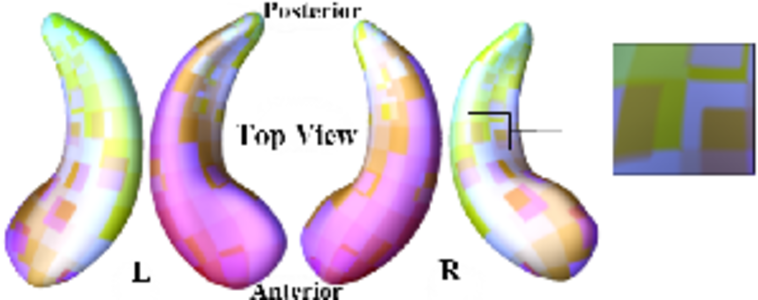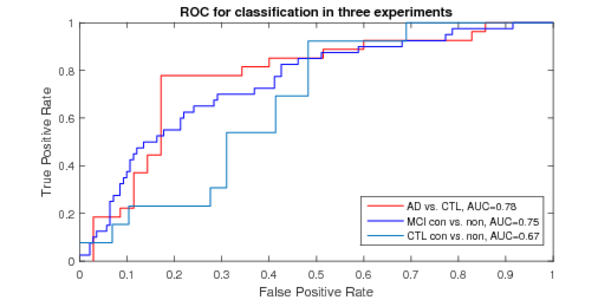Applying sparse coding to surface multivariate tensor-based morphometry to predict future cognitive decline
Jie Zhang, Cynthia Stonnington, Qingyang Li, Jie Shi, Robert J. Bauer III, Boris A. Gutman, Kewei Chen, Eric M. Reiman, Paul M. Thompson, Jieping Ye, Yalin Wang
Abstract
Alzheimer’s disease (AD) is a progressive brain disease. Accurate diagnosis of AD and its prodromal stage, mild cognitive impairment, is crucial for clinical trial design. There is also growing interests in identifying brain imaging biomarkers that help evaluate AD risk presymptomatically. Here, we applied a recently developed multivariate tensor-based morphometry (mTBM) method to extract features from hippocampal surfaces, derived from anatomical brain MRI. For such surface-based features, the feature dimension is usually much larger than the number of subjects. We used dictionary learning and sparse coding to effectively reduce the feature dimensions. With the new features, an Adaboost classifier was employed for binary group classification. In tests on publicly available data from the Alzheimer’s Disease Neuroimaging Initiative, the new framework outperformed several standard imaging measures in classifying different stages of AD. The new approach combines the efficiency of sparse coding with the sensitivity of surface mTBM, and boosts classification performance.
Figures (click on each for a larger version):
Related Publications
- Jie Zhang, Cynthia Stonnington, Qingyang Li, Jie Shi, Robert J. Bauer III, Boris A. Gutman, Kewei Chen, Eric M. Reiman, Paul M. Thompson, Jieping Ye, Yalin Wang, Applying sparse coding to surface multivariate tensor-based morphometry to predict future cognitive decline, Biomedical Imaging (ISBI), 2016 IEEE 13th International Symposium on, vol. 9900, pp. 326, 2016, ISSN 0302-9743, ISBN 978-3-319-46719-1.

